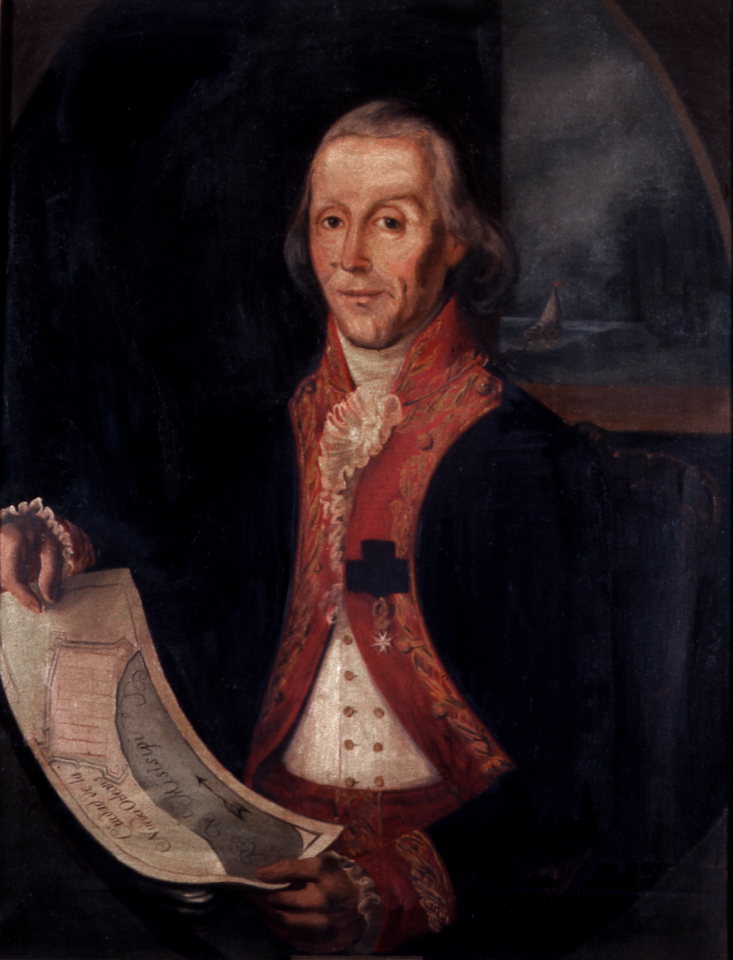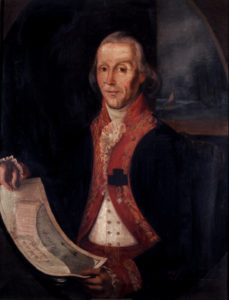Francisco Luis Hector, baron de Carondelet
Francisco Luis Hector, baron de Carondelet served as governor of the Spanish colonies of Louisiana and West Florida between 1791 and 1797.

Courtesy of Louisiana State Museum
Baron de Carondelet. unidentified
Francisco Luis Héctor, barón de Carondelet served as governor of the Spanish colonies of Louisiana and West Florida between 1791 and 1797, perhaps the most turbulent years of the Spanish colonial era (1763–1800). While in office, Carondelet faced expansionist pressures from the United States, internal dissension inspired by the French Revolution (1789–1799), and threatened attacks from the French (in 1793–1794) and the British (in 1796–1797).
Carondelet was born in Cambrai, France, on July 29, 1747, the son of Jean Louis Carondelet and Marie Angélique Bernard de Rasoir. He entered Spanish military service in 1762. In October 1777, he married María de la Concepción Castaños y Aragorri, a native of La Coruña, in Madrid. After serving in the Caribbean during the American Revolution (1775–1783), Carondelet participated in the Spanish siege of Pensacola in 1781. Eight years later, he became governor of San Salvador in Guatamala (now part of El Salvador).
On March 13, 1791, he was appointed governor of Spanish Louisiana and West Florida. During his term, Carondelet worked diligently—if unrealistically—to forge a grand alliance of southern Native Americans to defend Spain’s holdings against encroachment from the United States. As a means of stimulating economic growth in the colony Carondelet also urged the Spanish Crown, without success, to make New Orleans a free port and was responsible for numerous public improvements in New Orleans, including the construction of a canal linking the Mississippi River with Lake Pontchartrain. His efforts to strengthen the colony were dashed, however, when Spain acquiesced to US territorial demands in the Treaty of San Lorenzo (1795), also known as Pinckney’s Treaty.
In 1796, Carondolet was reassigned to the Viceroyalty of New Granada in northern South America, where he eventually became president of the Audiencia of Quito, an administrative branch of the Spanish government located near present-day Equador. He died there on December 10, 1807.
Adapted from Thomas D. Watson’s entry for the Dictionary of Louisiana Biography, a publication of the Louisiana
Sources: Eric Beerman, “XV Baron de Carondelet, Governador de la Luisiana y la Florida (1791-1797),” Hidalguia, (1978); Charles Gayarré, History of Louisiana, vol. 3, The Spanish Domination, 4th ed. (1983); Abraham P. Nasatir, Spanish War Vessels on the Mississippi, 1792-1796 (1968); James Pitot, Observations on the Colony of Louisiana from 1796 to 1802 (1979); Arthur Preston Whitaker, The Spanish-American Frontier, 1783-1795 (1927); Mary A. M. O’Callaghan, “The Indian Policy of Carondelet in Spanish Louisiana, 1792-1797” (Ph. D. dissertation, University of California at Berkeley, 1942); Thomas Mark Fiehrer, “The Baron de Carondelet as Agent of Bourbon Reform: A Study of Spanish Colonial Administration in the Years of the French Revolution” (Ph. D. dissertation, Tulane University, 1977).
